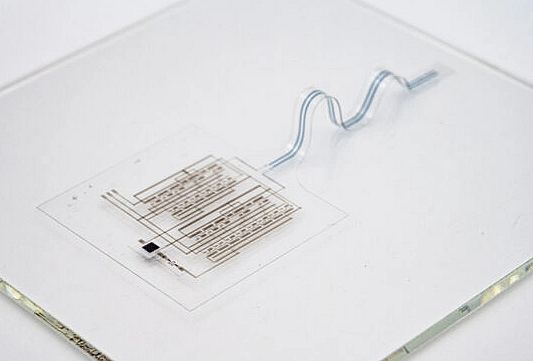
Researchers at Stanford University have created a special kind of electronic skin that can sense things like heat and pressure and send signals to the brain.
Electronic skin has been around for a while, but in the past, the devices used to convert these sensations into signals were bulky and inflexible. However, the new electronic skin is as soft and thin as real skin.
The components that convert the sensations into signals are integrated smoothly within the skin, which is only a few tens of nanometers thick.
Comprehensive sense of sensation in artificial limbs
Zhenan Bao, a chemical engineering professor at Stanford University, said that they aim to develop a “whole hand with multiple sensors” that is capable of detecting pressure, strain, temperature, and vibration.
The researchers noted that one of the many reasons why people avoid using prosthetics is the absence of sensory feedback. Consequently, the limb feels unnatural and uncomfortable to them. So, to counteract the unwanted feeling, they have created the special kind of electronic skin.
Once they achieve the goal, they would be in a better position to develop a comprehensive sense of sensation in artificial limbs or robotic systems.
Lab tests of e-skin on rats
Initial tests of the electronic skin were done on the brain cells of rats.
When the cortexes of these animals were stimulated, they responded by twitching their legs. The intensity of the twitching correlated with different levels of pressure applied.
E-skin exhibits low voltage requirements
One of the challenges faced by the researchers was to develop a flexible electronic skin that could operate on low voltage.
Previous attempts necessitated 30 volts of power. However, the team overcame this obstacle by inventing stretchable field-effect transistors and solid-state synaptic transistors.
These advancements allowed them to reduce the required voltage and enhance the efficiency of the electronic skin.
Weichen Wang, an author of the paper stated that the newly developed electronic skin operates on a mere 5 volts and could detect stimuli in a manner like real skin.
In comparison to poly-silicon transistors, the e-skin exhibits electrical performance characteristics such as:
- low voltage requirements
- low power consumption and
- moderate circuit integration

Takeaway
Electronic skin, as per the team, has the potential to blur the line between the human body and machine components.
Therefore, by integrating this technology, the distinction between living tissue and artificial components could be diminished or eliminated.
Additionally, the development is also a step towards building robots that can experience human sensations like pain, pressure, and temperature. This would enable the machines to better understand and respond to signs of comfort or distress when working with accident victims or in an uncomfortable arena.
Via: Stanford News



